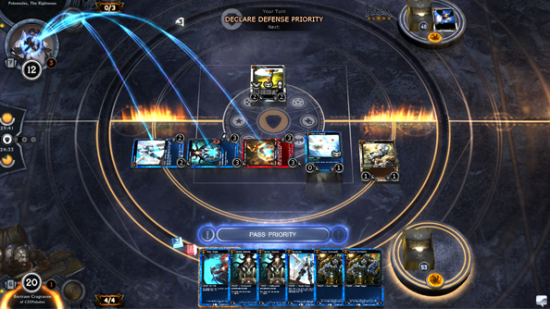Imagine if World of Warcraft were a card game. Not Hearthstone. That’s a Warcraft-themed card game. Totally different thing. I’m talking about something much more ambitious. A card game with heroes, epic loot, dungeons, guilds, crafting, an auction house, and tournaments. An MMO that was also a card game.
That game is Hex. And if it gets its claws into you, you will not be seeing the light of day for a long, long time.
Hex is already a success for developer Cryptozoic: it raised $2.2 million from 17,765 backers in aKickstarter campaignlast year.You might remember it.It was the one whereCryptozoic’sfounder, Cory Jones, shot a clown in the pitch video.
It flew, because Cryptozoic have form. They are the guys you turn to if you want to play a collectible card game. They’re all veteran developers, and they all have history with CCGs.
“Without Magic: The Gathering,I’d never have made it into the games industry,”says Cory.“I got in by playing Magic competitively and meeting people in the video game industry.”
“All of our guys working on the Trading Card Game part of the game, we’ve all been living and breathing TCGs for at least a decade,”saysBen Stoll, Hex’s lead designer. “That’s what our background is. We all played in tournaments and played the Christ out of TCGs, even before we got into the industry.”
They’re not solely card game designers, though. “My first project was World of Warcraft,” Hex’s lead systems designer, Kevin Jordan, tells me. He was one of the first three designers on Blizzard’s fantasy MMO. “It turned out pretty well.”
The idea for Hex has been stewing for close to a decade
“It originally came from when I pitched the World of Warcraft TCG at Upper Deck.Avirtual world like an MMO that has so much available content’ – because TCGs churn through content very quickly – ‘but also has a community at its backbone, I think that could be a very good marriage of video game meets trading card game.’
“Pitching that concept in interview was where I married the idea of MMO to TCG, butit wascoming from the other angle,we would make a physical game about a digital game.”
Hex is entirely digital.
So how does it play?
A standard game of Hex starts with two players, both with 20 health and 7 cards in their hand. The winner is the one who gets their opponent’s health to zero first. As the attacker you target your opponent, not their minions. It’s for the defender to decide which of their foe’s minions they’ll block with their own and which to let hit their precious health points.
It’s a neat change from Hearthstone, where the attacker is largely in control and defence is handled automatically. It makes attacking a more nerve racking experience. You can’t be sure of the outcome – will they block you? Let you through? Will they counter by casting a spell? And that’s the other key difference between Hex and Hearthstone, Pass Priority.
In Hex, most actions can be countered. When I play a card and summon a minion to the battlefield my opponent can play a card before my creature comes into play. That card could do anything from sendingit back into my hand, take half its health, or turn it traitor and put it under my opponent’s command. When I launch an attack the defender, again, can play counter cards – buffing her blocking minions or straight up lobbing a fireball at my creatures. It adds a great deal of tactical depth to the game.
If you’ve played TCGs before you might recognise these concepts from Magic: The Gathering. There are similarities in Magic and Hex’s rule sets, from pass priority, 20 health, to the seven card hand. Plus, there’s already a digital version of Magic. So what exactly is the fuss about?
It’s because Hex is designed first for computers. And the freedom that gives its designers is extraordinary.
“A lot of conventional TCGs are painting on a canvas which is 10 inches by 10 inches,”Coryenthuses. “We have a whole roll of canvas.The amount of innovation and design space available because of the digital piece, it’s not like ten times the space, it’s 1,000 times the space.” He pauses.“It’s crazy.”
Let’s look at some cards. TakeReplicator’s Gambit. This card lets you buff one of your troops so that the next time it’s played it spawns six copies of itself. You can find a piece of loot,The Mirrorblade, which triples the power of this card. You could end up with 18 separate copies of your minion all in play at once, all with their individual health counters. They can be separately buffed, too, making for mayhem on the battlefield.
Other cards can evolve mid-game into a completely different kind of minion. That minion could then change into something else, and on and on – such as theAscetic Aspirantwho becomes theEnlightened Seekerand, in turnThe Transcended. Or, if you’ve theVampire Kingin play, every enemy troop you kill is transformed into aVampireunder your control. Cards can gain a permanent buff through a game, meaning if they are shuffled back into the deck the computer remembers for when it’s played again.
This new flexibility offers more than just clever mechanics. Cards can level up, unlocking new artwork and foil status as they go. They can be fitted with loot and gems which enhance their basic abilities. I particularly like that each card’s history is inscribed on its back. Cards in Hex have three sides. The front, the back, and the reality defying double back. On this weird third side all the card’s legacy details are stored. If you used one in a winning hand during a tournament then that card will gain a trophy, marking its part in your success.
Put mechanical possibilities and physics-bending card properties to the back of your mind for a moment, from what I’ve played so far, it all justworks. The deck I’m playing with at the moment is made up ofShin’hare, psychotic rabbits that find strength in numbers. I’ve cards like theRunts of the LitterandUzume, Grand Cuncubunnywhich regularly spawn in new bunnies. The rabbits themselvesbegin as fluffy little nothings, butwith cards likeBucktooth CommanderandEvolveI can give them all buffs. Even my champion,Monika’shin, let’s me spawn a Battle Hopper every third resource token I play. My opponents find they simply can’t block the number of troops I have to throw at their health points.
The game’s still in alpha so I’ve niggles with bits of the interface, occasional lag, and such, but the card game at the core of Hex is excellent fun. Compared to Hearthstone, Hex is simply tactically richer andmorerewarding.
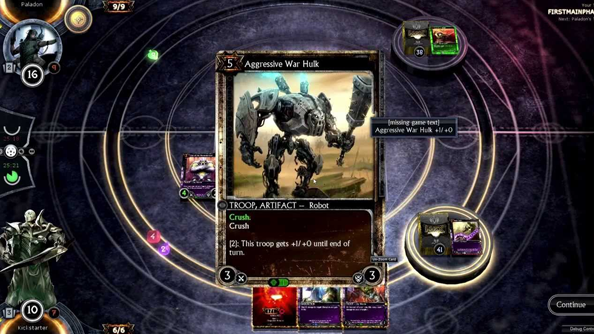
Even so, Corydoesn’t necessarily accept theHearthstone comparison. He doesn’t see it,and other digital trading card games,as competitors.
“I love Hearthstone, and I love all the casual strategy games out there,”Corytells me. “But I do think there are games out there that are calling themselves TCGsand CCG’s and they’re not. For me, the definition of a TCG is that very robust system of having pass priority, the chance to do something on an opponent’s turn, having a resource system, having that depth of gameplay that really sets up deep strategy. That is a TCG to me.
As competitors go, there aren’t any other MMOTCGs out there.
“I make the joke occasionally that it’s an embarrassment of riches when it comes to invent things for this game because there’s so much unmined property,” Jones says.
“The MMO element allows us to open up this sandbox between the equipment component, the socketed cards component, thePvEchanging the gameplay experience component, the champion and levelling every champion in the choices you make and how that then affects your deck.”
The equipment and gems Jones describes are found while questing through Hex’sPvEmissions. Hex takes place on a fantasy world calledEntrath, a world split between two battling factions – the Ardent and the Underworld. The missions you undertake see you rewarded with gold and loot like any other MMO and the equipment you find can be worn by your character to augment the abilities of your cards. While equipment can only be used inPvE, gems can be fitted into a card socket and used inPvP, too.
“Ask any Magic player what their most fervent wish would be and it would be to make their own card,”Corycontinues. “When you first start playing card games you think ‘You know what’d be awesome? If you had a guy who came into play and did this…’. That’s everyone’s first reaction to a TCG. So we’re really trying to be the first game that gives you some piece of that experience: you can go in and look at all the gems you want to socket with and change that card fundamentally, you can go and look at the equipment available, and how each of those changes the card, and, if you change that card, how does it change all the other cards in your deck.
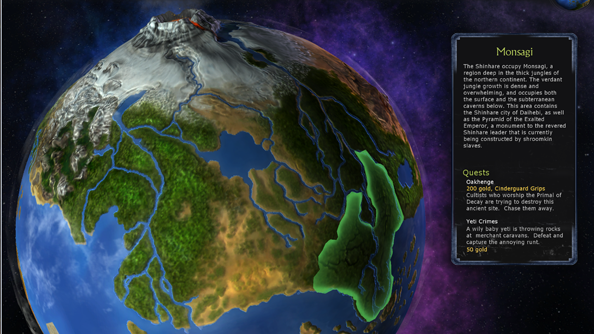
But, really, what thedrives Cryptozoic is creating a place where trading card game players can gather. “People age out of TCGs,” saysCory.“It’s a reason why we’ve gravitated towards video games, a computer’s in your house, in your office.
I was worried that, as we sawin ourSpaceHulkreview, something would be lost when converting areal-world gameto digital.
“[Digital can] make things insular,” Kevin admits. “Whereyou’re sitting at your computer and there’s often no real connectionbetween you and other players. But every decision we make it is pro community. We want that sense of shared place, the experience of being a room with people.
To support this fundamental part of, both, MMOs and TCGs Cryptozoic are building a robust guild system. It hassomefeatureswouldyou expect,likechat rooms and party features for tournaments, butsome youwouldn’t. Each guild has a shared bank,for instance,a place where members have the opportunity to play with cards they’ve yet to find in booster packs or out in the world. You can check in a deck and other members can try it out and leave notes for how to improve it.
The bank is more thanjust a stash, though.It’s a cultural history of that group of players Because every card has its history inscribed on its back, the bank becomes a store of that guild’s achievements. Joining a guild is to join and play with its artefacts, its cultural and financial worth.
Which is where the auction house comes in to play.
Most trading card games will create a secondary market: where rare, out of print or even infamous cards can be sold for thousands of dollars on eBay. Cards that have been owned and used by famous players can become collector’s items.Cryptoziocwant to capture that same secondary market within Hex.
“Once a card is used in that tournament it will get a trophy that says the tournament name, you won it, who the player was and that will stay on the card forever,” saysCory.“If you get the card later on, you will be able to look at that it and go ‘Holy shit, this is the card that that big timePvPplayer won the tournament with.”
Cryptozoic are staying well clear of the auction house themselves,andit will only be populated by the cards that players themselves are putting up for sale.
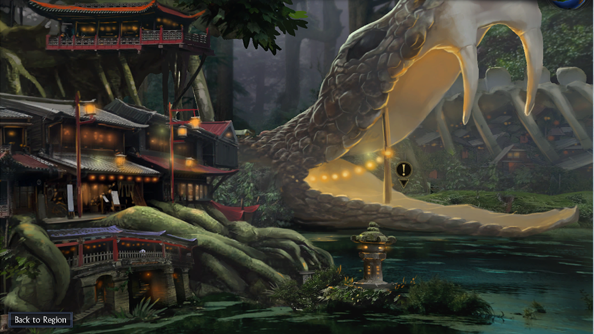
Where Cryptozoic make their money is through selling booster packs and tournament entry fees. The packs will set you back $2 and entry costs $1. That means you can play through all of thePvEcontent for free and you play as many one on onePvPmatches as you like. If you want it there is a $4 a month subscription model you can sign up for which gives you a booster pack a week and entry to a subscribers-only tournament.
If tournament play becomes your thing then this is where Hex might get its claws into your wallet hard. “The way tournaments work inPvPis that there’ll be different formats but for the primary format we have what is called blocks,” Jones tells me. “In a block you’ll have x number of sets that are legal in the tournament setting.”
Cryptozoic will be periodically releasing new cards in batches of more than 200, each batch is a set. As the new sets are published they’ll stop selling booster packs of the old sets in the Hex store.
“Basically it is going out of print,” Jones says. “That’s the way that we control the meta.”
By the ‘meta’ Jones means the tactics players are using. Set One cards might prove to favour power players, those who summon big, high damage monsters to crush their enemies. To balance this Set Two cards might favour spells and minions that negate high damage attacks.
“So, if we can rotate out sets from the block that are currently legal it allows us to move the meta into different places. If you had every card ever made always available it’d be very hard to control the meta.”
It also means they can introduce new mechanics that play on old sets. “We have this Set Two mechanic that could genuinely only be done in the digital space, a big core mechanic, and I think that people will flip.
“That’s something that TCGs have in spades: the idea that a new set isn’t a new set, a new set is a new lease on life for everything that’s come in the past.” Jones continues. “You talk about something like gems, for us, and imagine when we put out some new gems: so now what I’ve said implicitly is go back and look at every card that has a socket on it and you can actually go and do something new with that card. Put that gem into it and see what new combo has occurred. That’s so exciting.
“You can see people when we’re in set three and four, people will start to get so exciting when we start putting out the spoilers. ‘Here’s ten new cards from the next set’ and ‘Oh my God, myVennondeck has been waiting for this card. Holy Christ, I can’t wait. I got aVennonspider spawn deck and this card is like all spiders get +1 and deal double damage. There are all these great things we can do that make all your decks in the past potentially become much better or much more interesting. It’s an inherent value that TCGs provide.”
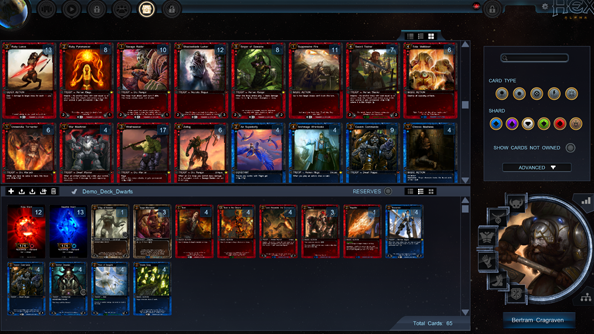
More than that though, this rotation stimulates the auction house. “So,” Jones explains, “you may have opened up all your packs, and someday you want to have some more Set One packs and somebody had a hundred packs they never opened and they can go to the auction house and sell them for whatever the market will bear.”
Blocks aren’t the only tournament format.If you don’t want to keep up with the most current card releases there’s the Gunslinger format. It’s a game type where every card available is legal (including cards that are usuallyPvEonly). “So people will make these insane, degenerate, crazy decks,” Jones tells me excitedly, “but there are so many versions of the insane, crazy degenerate decks that you never know what’s going to beat what so it just becomes a free-for-all, fun, crazy format.”
Hex is clever. It’s just trying so many new concepts, exploring incredibly new design spaces. WhileCoryis absurdly enthused by what they’re doing, you can see how much work is yet to be completed.
“That’s the interesting about this,” Jones said, relaxing a little and, not forthe first time, looking tired,“it’s hard.”
“It is hard to create something that never been done.There are so many challenges that you don’t realise. Every little decision has ramifications on everything else.If we do this then we can’t do this, or this means it impacts that other thing that we did, and it’s like building the clockworks of a watch and everything touches everything,”
Then that familiar liveliness returns: “We’ve ended up with this thing which is just remarkable. It’s so much greater than the sum of its parts that I think people, when they get the chance to play it, are just going to be sosurprised by it.”
Editor’s note: travel and accommodation to Los Angeles were paid for byGameforge,Hex: Shards of Fate’s European publisher.
